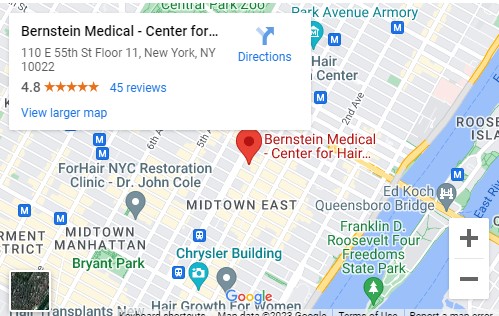Q: I had an old hair transplant and I’m hoping to remove these plugs and of course am concerned how much additional scarring would result. I’m wondering if removal of the total hair plugs (which are perhaps 2 or 3 mm in diameter) by coring them out would result in a lot of additional scarring. […]
Q: I’m male, early thirties and in the early stages of hair loss, too early for hair transplants. I am experiencing extreme shedding. I took Avodart for 6 weeks, but because of the shedding I stopped. Now, it still continues as strong as ever. I’ve been losing about 200 hairs every day in the shower. 3 months ago I had so much more hair, what is going on? I heard that shedding can happen, but not like this. Could this have caused telogen effluvium, or something else? — M.M., Boston, Massachussetts
A: Since Avodart (dutasteride) is a more potent medication than Propecia (finasteride), the shedding (telogen effluvium) may be more dramatic. If you have made a decision to use Avodart, then you need to tolerate this short-term effect. It should subside within the first 6 months on the drug.
Q: I stopped using Rogaine for my hair transplant, when can I start using it again? And would it be any different with the new Rogaine foam. — J.N., London, United Kingdom
A: I would wait at least 7 days to use Rogaine (minoxidil) in either liquid or foam.
The foam has less alcohol and can be irritating when applied to open wounds, but should be fine one week post-op.
Q: I heard that Rogaine only works on the crown and not on the front or top of the scalp. Is this true? — D.D., New Haven, Connecticut
A: Rogaine (Minoxidil) has the potential to work where ever there is miniaturized hair, either the front, top or crown (however, it will not work in areas that are completely devoid of hair).
Q: I had a hair transplant 4 days ago and am feeling itchy in the area where I have my grafts. When can I start massaging the area? — N.D., Warwick, R.I.
A: You can massage at 10 days post-op, as the grafts are firmly in place by this time, but I would not scratch the area for several weeks more, if at all.
Itching can be lessened by applying hydrocortisone 1% ointment to the area twice a day and by taking Benadryl 25mg every 4 to 6 hours (may cause drowsiness). Both medications can be obtained over-the-counter without a prescription.
Q: Dr. Bernstein, I saw you on TV where you explained why you haven’t had a hair transplant. If you had better donor hair and you could do the surgery on yourself, then would you consider having a hair transplant? — M.U., Westport, CT
A: Yes.
Q: I heard that you could get a laser treatment for hair loss in a doctor’s office with a new laser called the Revage. What is this and how does it compare to the laser comb that I can buy myself?
A: The Revage Laser is a Low Level Laser Therapy (LLLT) treatment for thinning hair manufactured by the company Laser Hair Therapy of North America, LLC. It is FDA classified or permitted to be sold as a cosmetic device, but not as a medical device at this time.
The Revage system contains 30 laser diodes that rotate 180 degrees around the scalp. This dynamic process increases the contact of the laser energy with the hair follicles. It is available only through a physician’s office.
Q: I heard that you can buy a laser for hair loss and use it at home. What are the advantages or disadvantages of doing this?
A: The advantages of home use are convenience and that it is generally less expensive than going to a doctor’s office for treatment.
The main disadvantage of using laser treatments without a doctor’s supervision is that a more effective treatment for hair loss may be available and you may not know about it. By spending time using the laser, the window for a more effective treatment may be missed. A good example is the 20 year old male who has extensive hair loss in his family and is just starting to thin. It is very important for this person to start Propecia (finasteride) as soon as possible, since the long-term benefits of using this medication are well established.
Q: I am a 33 year old woman and have been told my hair is too thin on the sides for me to have a hair transplant. Could I benefit from laser treatments?
A: Although the long-term benefits on hair growth are not known, Low Level Laser Therapy (LLLT) is able to stimulate hair to become fuller in appearance in the clinical trials that have been carried out for six month periods.
Since the laser light serves to thicken fine, miniaturized hair, it is particularly suitable to areas of diffuse thinning, rather than areas of complete baldness.
Since hair loss in women commonly has a diffuse pattern, because women can’t take Propecia (finasteride), and the fact that women are less often candidates for surgery (as compared to men), laser therapy in females is particularly appealing.
Q: I heard about the laser comb and other lasers for hair loss, how do they work?
A: Low Level Laser Therapy (LLLT) is based on the scientific principle of photobiotherapy. Photobiotherapy occurs when laser light, absorbed by cells, causes stimulation of cell metabolism and improved blood flow.
Although the exact mechanism by which lasers promote hair growth is still unknown, they appear to stimulate the follicles on the scalp by increasing energy production and partially reversing the miniaturization process leading to thicker hair shafts and a fuller look.





